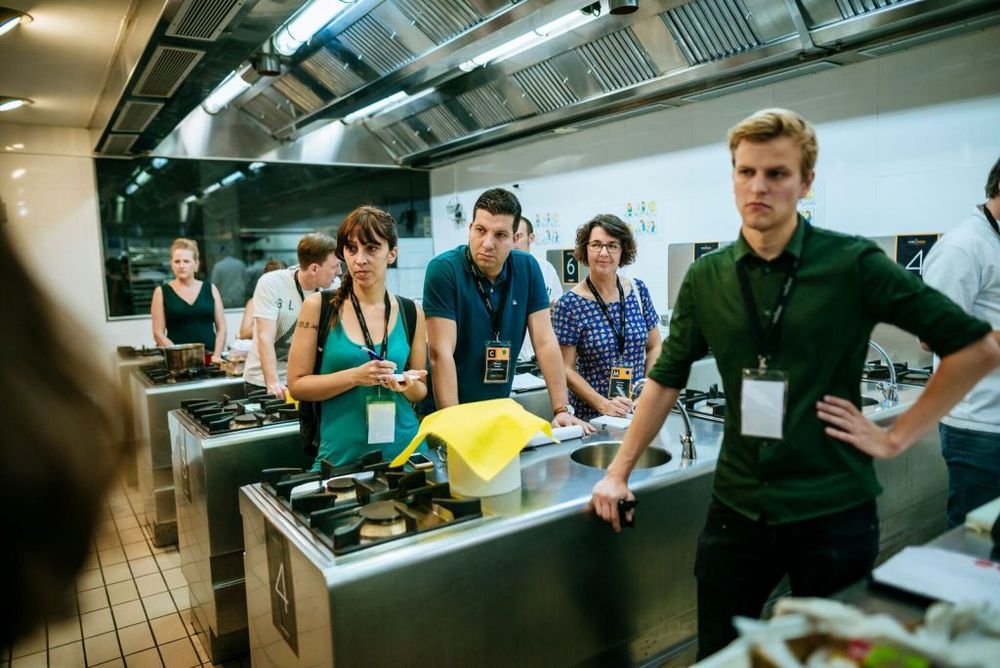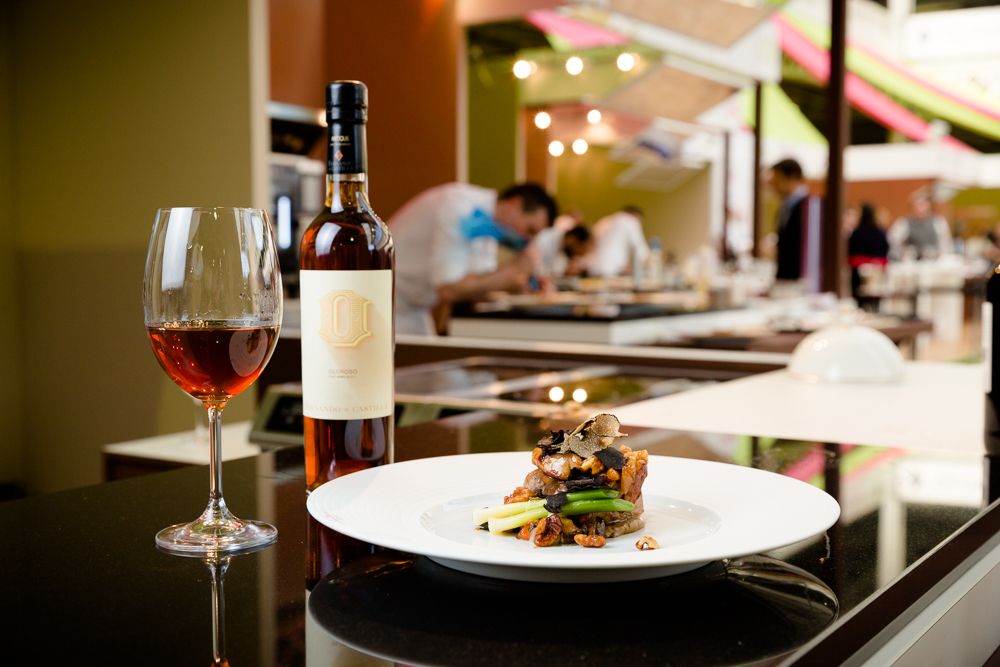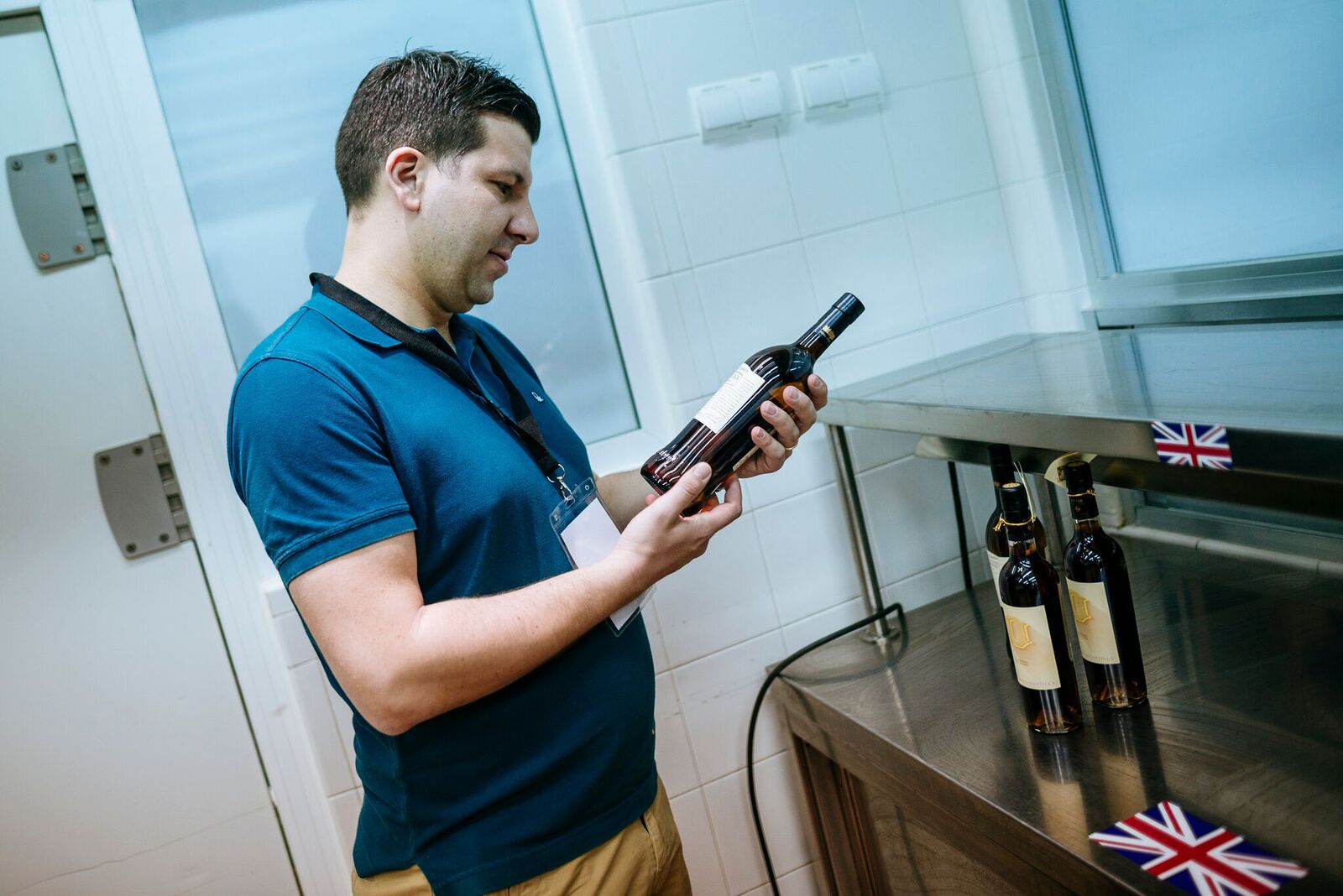Briccarello and Ferlito are two of the world’s best and most respected sommeliers and one of their shared key messages of how to use sherry as a food-pairing wine is to work very closely with the head chef so that you work together as a team understanding one another’s inspirations.
The general rule of thumb for pairing sherry with food is pretty straightforward:
If it swims drink Fino
If it flies drink Amontillado
If it runs drink Oloroso
Once you dig a bit deeper, of course, this versatile, fortified and most ancient of wines can be used by restaurants from simple tapas bars up to Michelin-starred establishments in far more complex scenarios.
One of the messages that came across from a discussion between two of the world’s top sommeliers was how very subtle nuances of a multi-faceted dish can be enhanced by which style of sherry you pick for a pairing.
The acidity and salinity of a Fino, for example, is perfect to match shellfish such as langoustine but also dealing with highly complex flavours such as meat terrines and sauces. The slightly richer style of Amontillado that can have notes of walnut, caramel and dried fruit is more suitable for main courses with many more levels of flavour: rabbit, quail, mushrooms, and anything salty like Serrano ham.

Ferlito (centre) preparing for this year’s Copa Jerez competition
The entries for this year’s Copa Jerez saw gastronomy at the highest level with a good deal of imagination and ingenuity gone into the complexity of the pairing.
Before sharing some of their food pairing tips Andrea Briccarello, group sommelier for Galvin La Chapelle and Giovanni Ferlito, head sommelier at London’s Ritz, who went on to win the 2017 Copa Jerez, shared some of their overall feelings towards sherry.
“What I find so inspiring is that it is so versatile with food,” says Briccarello, “Start with the easy one – dessert – and then work from there, “sherry can easily open a door to food pairing and and make it much more exciting.”
“To be honest I thought the Copa Jerez was going to be easy, but the benchmark was very high and the level of restaurants also very good. What it did though was develop me as a sommelier, working with the chef to make some wines and dishes that make an exact match.”
Ferlito also believes it is the link that he forged with his head chef that was a secret to his success.

Ferlito, explaining the background to his Copa Jerez success at this year’s Great Sherry Tasting
“It was like cross-training, me the sommelier working with the chef, as he explained to me the vision of his dishes. It’s a natural link working together and then me sharing this passion and knowledge with the guests. The sommelier really makes the difference on the floor and in recent years we have really taken over the floor of the restaurant.”
For his Inspiration menu at the Copa Jerez, Briccarello served a Manzanilla Las Medallas de Argueso with a starter of Ceviche of Cornish sea bass, compressed watermelon and crispy hake tongues. For the main he served an Oloroso Seco, Gobernador Emilio Hidalgo with Saddle of rabbit, morcilla, Serrano ham and morels. For dessert he served a Moscatel Emilin, Lustau with a prune and hazelnut financier.
Ferlito then went through each of his three courses that won the Copa Jerez 2107 and explained in detail both the dish and how each sherry worked with it.
Starter: Scottish glazed langoustine on a bed of broad beans and peas, served with mint tips, squid ink, langoustine sauce, pea shoot and toasted almonds.

“For this dish I served it with Manzanilla, Pasada Pastrana, Hidalgo La Gitana (Mentzendorff).”
“This sherry is from a single vineyard, made from the first, free-run juice – it has a pure, clean style. Manzanilla is good paired with seafood and shellfish, but the beans and peas go well with the chamomile notes in the sherry, and the toasted almonds go with the slightly smoky notes of the sherry. The squid ink helped give the pairing balance between sweet and salty.
Main: Fillet of veal on a bed of mushroom puree, baby leeks, caramelised walnuts, sweetbread, shaved black truffle, veal jus and Oloroso reduction.

“For this dish I served an Oloroso Antique, Fernando de Castilla (Boutinot).”
“This sherry is from a small independent bodega, the sherry is unfined and unblended and aged for twenty years in the solera. The sweetbread brings a creaminess to the veal and gives the impression of sweetness and roundness while the sherry matches the earthiness of the truffle.”
Dessert: Haleznut and figs semi freddo

“This is a dessert that’s made for a chocoholic. It has salted caramel, nut biscuit, hazelnut cream, poached figs and vanilla ice cream and then we covered it with a dark chocolate cage.”
“For this dish I served a Pedro Ximénez, Noe VORS, Gonzalez Byass (Gonzalez Byass UK).”
“This late harvest wine comes from one of the greatest bodegas in Jerez. On the nose there are notes of rich toffee, hazelnuts and figs (it has 320 grams of residual sugar). The reason the salted caramel is there is to bring out the sweetness of the chocolate not the bitterness.”
Ferlito explained that with the wine menu at the Ritz he has positioned sherry as its own category on the second page with ‘Sherries by the glass’ listed according to which of the seven styles they belong to. Whole bottles of sherry are then listed at the back of the menu.
As for how to serve them, the message is unanimous – never use a small, ‘traditional’ sherry glass (catavinos). Rather, always serve it in a wider white wine glass so that the customer can appreciate the aromas of the sherry more.

Briccarello and Ferlito were talking at a Masterclass held at The Great Sherry Tasting 2017 event that this year reported increased attendance at its OXO Tower venue.










































